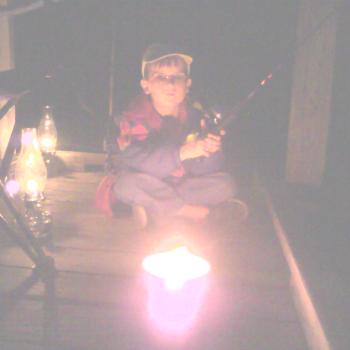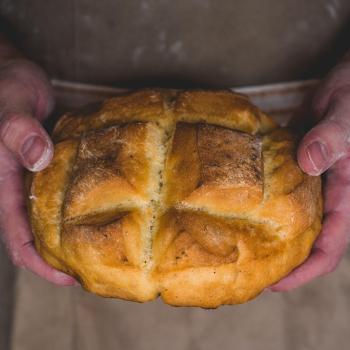Every religion in the world has sacred places. Why shouldn’t your home be a sanctuary? Here’s how to create sacred space in your home.

Sacred Places
When you enjoy your quiet time alone with God, consider having a sacred place to make that time more special. Throughout the Judeo-Christian tradition, people have marked places as holy. Jacob set up a standing stone in the spot where he wrestled with God. He called the place Bethel, which means House of God. The Hebrew people, wandering in the desert, created a mobile sacred place in the form of the tabernacle. Later, they built a permanent temple. Even within this temple, there was the Most Holy Place where the high priest met with God. During the exile, Jewish believers met in synagogues because the Babylonians destroyed their temple. This synagogue-centered tradition continued even after the remnant returned to Israel and rebuilt the temple. The synagogue would endure as the most important Jewish sacred place after the Romans destroyed the temple yet again. (Click here to read a history of the Jewish temple.)
Later, Christians would create their own sacred spaces and call them churches. The Church erected monuments and altars over many Pagan sacred places, where generations of pre-Christian believers knew the veil between worlds to be thinnest. It’s human nature to carve out special space to meet with God in prayer. But sacred space doesn’t need to be confined to established houses of worship. Why not create a sacred breathing space in your own home?
How To Create Sacred Space in Your Home
You can create a special breathing space in your own home and mark it as holy. For you, this might look like a little shrine where you can light candles, burn incense, or drop handwritten prayers into a jar. You might decorate this prayer space with a painting of Jesus, a cross, a crucifix, or any other artwork that’s meaningful to you. Or maybe you’re not the shrine kind of person. Your breathing space might look like an overstuffed armchair surrounded by old leather Bibles, commentaries, and devotion books. Or you could be the outdoorsy sort. Your sacred spot could be a garden bench, a tire swing in your backyard, or a balcony table. Many people find it refreshing to have a designated spot where they can read scripture, pray, and just breathe.
Holy Garments
What do you wear when you pray? For many Christians, this might sound like an odd question. Yet, faithful people around the world often have special garments they wear to make their prayer time feel more holy. Many Jewish people wear yarmulkes, prayer shawls, or phylacteries when they pray. In some Christian traditions, women wear head coverings when they pray. Not to mention the vast array of vestments worn by clergy as they pray, while performing their public duties.
If you’ve never considered special clothing for prayer, now might be a good time to think about it. I’m not suggesting cultural appropriation like an old Gentile friend who used to don a Jewish yarmulke and tallit when he went to prayer. But maybe within your tradition, you can find something to put on that marks your prayer time as special. A cross necklace dedicated specifically to your prayer time, perhaps. A rosary. A favorite sweater, scarf, or bathrobe, dedicated to your prayer time. Or even a cozy blanket that you always curl up in, when you pray. There’s something about clothes that change your attitude, making your heart ready for prayer.
Sacred objects
There was nothing magical about Moses‘s rod or Elijah‘s cloak. Miracles didn’t surround them because they possessed some mystical quality. Yet, these objects were used so often in prayer by their owners that they took on sacred characteristics. I, too, have a special walking stick that has accompanied me on so many prayer journeys that it feels imbued with special virtue.
For you, maybe it’s your grandma’s Bible, your uncle’s medicine pouch, or that bottle of anointing oil you got at a church conference years ago. It could be the feather from a dove that flew over you one day when you were seeking God, or a pebble you picked up while on retreat. These special objects aren’t magical in and of themselves. Yet, something about their proximity to prayer over a long time seems to have made them holy. Sometimes all you have to do is hold one of these items, and it’s like touching the hem of Jesus’ garment. There’s no time like the present, to think about incorporating sacred objects into your homemade sacred space.
Shortcuts to the Divine
By setting aside a portion of your home for prayer, you mark your entire home as a sacred space. A holy place, special garment, or sacred object can become a shortcut, if you will, to the divine. When you’re trying to reach God through prayer, using sacred places, clothing, and objects can be like following a well-worn path, instead of trying to carve a trail out of the wilderness. I hope you’ll consider these things as a way of attuning yourself to God, and entering into the blessedness of breathing space.













